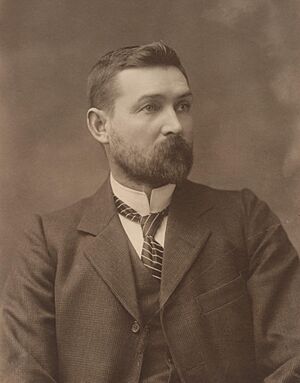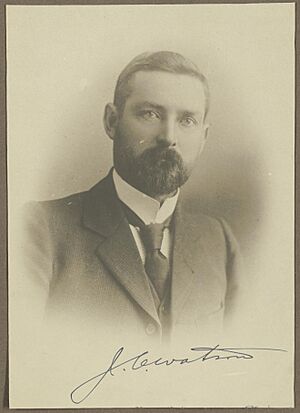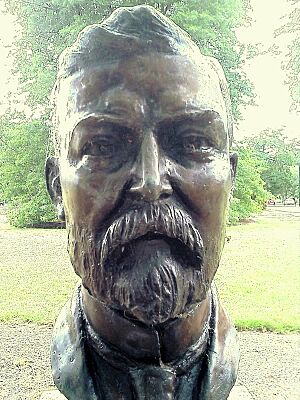Chris Watson facts for kids
Quick facts for kids
Chris Watson
|
|
|---|---|
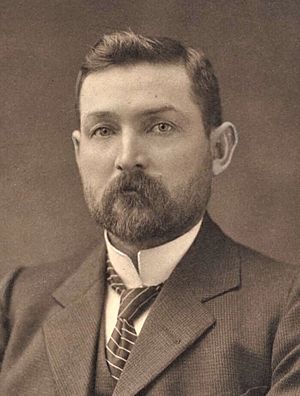
Watson c. 1904
|
|
| 3rd Prime Minister of Australia | |
| In office 27 April 1904 – 18 August 1904 |
|
| Monarch | Edward VII |
| Governor-General | Lord Northcote |
| Preceded by | Alfred Deakin |
| Succeeded by | George Reid |
| Treasurer of Australia | |
| In office 27 April 1904 – 17 August 1904 |
|
| Prime Minister | Himself |
| Preceded by | Sir George Turner |
| Succeeded by | Sir George Turner |
| 1st Leader of the Labour Party | |
| In office 20 May 1901 – 30 October 1907 |
|
| Deputy | Gregor McGregor |
| Preceded by | Position created |
| Succeeded by | Andrew Fisher |
| 2nd Leader of the Opposition | |
| In office 18 August 1904 – 5 July 1905 |
|
| Prime Minister | George Reid |
| Deputy | Gregor McGregor |
| Preceded by | George Reid |
| Succeeded by | George Reid |
| Member of the Australian Parliament for Bland | |
| In office 30 March 1901 – 12 December 1906 |
|
| Preceded by | Division created |
| Succeeded by | Division abolished |
| Member of the Australian Parliament for South Sydney | |
| In office 12 December 1906 – 19 February 1910 |
|
| Preceded by | George Edwards |
| Succeeded by | Edward Riley |
| Member of the New South Wales Parliament for Young |
|
| In office 17 July 1894 – 30 March 1901 |
|
| Preceded by | John Gough and James Mackinnon |
| Succeeded by | George Burgess |
| Personal details | |
| Born |
Johan Cristian Tanck
9 April 1867 Valparaíso, Chile |
| Died | 18 November 1941 (aged 74) Double Bay, New South Wales, Australia |
| Political party |
|
| Spouses |
Ada Low
(m. 1889–1921)Antonia Dowlan
(m. 1925) |
| Children | 1 |
| Education | Weston School |
| Occupation |
|
John Christian Watson (born Johan Cristian Tanck; 9 April 1867 – 18 November 1941) was an important Australian politician. He served as the third Prime Minister of Australia, from April to August 1904. He was also the first leader of the Australian Labor Party (ALP) from 1901 to 1907. Watson was the first person from the Labor Party to become prime minister.
Watson was born in Valparaíso, Chile. His father was a German-Chilean sailor. Chris grew up in New Zealand and took his stepfather's last name, Watson, when his mother remarried. He left school young and worked in printing. In 1886, Watson moved to Sydney, Australia. There, he became a key figure in the early labour movement. He helped start the Labor Electoral League of New South Wales.
In 1901, Watson was elected to the first federal Parliament. He became the first leader of the ALP in parliament. He supported the governments of Edmund Barton and Alfred Deakin. He was also a strong supporter of the White Australia policy. In 1903, the ALP gained more power in parliament. Watson became prime minister in April 1904, at just 37 years old. He was one of the first leaders from a socialist party to head a government anywhere in the world. He is still Australia's youngest prime minister.
Watson's government lasted less than four months. He lost a vote in parliament and was replaced by George Reid. Watson then served as Leader of the Opposition until 1905. He helped bring Deakin back as prime minister. Watson stepped down as Labor leader in 1907 due to family reasons. He left parliament in 1910. Later, he was removed from the ALP during a disagreement about conscription during World War I. He then joined the Nationalist Party. After politics, he had a successful business career. This included leading the NRMA and being chairman of Ampol.
Even though Watson's time as prime minister was short, it was very important. It showed that the Labor Party could form a capable government. His successor, Andrew Fisher, led the ALP to a big win in the 1910 election. Many of Watson's former ministers played key roles in that government.
Contents
Early Life and Work
Birth and Childhood
Chris Watson was born Johan Cristian Tanck on 9 April 1867 in Valparaíso, Chile. His mother, Martha, was from Ireland. His father, Johan Cristian Tanck, was a German-Chilean sailor. In 1868, Watson and his mother moved to New Zealand. His mother remarried George Thomas Watson in 1869. Chris was treated as George Watson's son and took his last name. His first names were also changed to sound more English.
As an adult, Watson sometimes gave different information about his birth. He might have done this to avoid problems with his political career. At that time, being born overseas to a non-British father could have caused issues for politicians.
Moving to Australia
Watson went to school in Oamaru, New Zealand, until he was ten. He then worked on a farm and later became a compositor (someone who sets type for printing) at a newspaper. This job helped him learn a lot about public affairs.
In 1886, at 19, he moved to Sydney, Australia. He worked for newspapers like The Daily Telegraph and The Sydney Morning Herald. Being around newspapers helped him learn more and get interested in politics. He became active in the printing union. In 1889, he married Ada Jane Low, a seamstress from Sydney.
Starting in Politics
Colonial Parliament Role
Before the 1891 New South Wales election, Watson helped start the Labour Electoral League of New South Wales. This group later became the Australian Labor Party. In that election, Labour gained enough power to influence who formed the government.
Watson was very active in trade unions. He became Vice-President of the Sydney Trades and Labour Council in 1892. He helped solve disagreements between the unions and the Labour Party. He also helped set up the basic rules for the Labour Party. These rules included how party conferences worked and how members in parliament should vote together.
In 1894, Watson was elected to the New South Wales Legislative Assembly for the area of Young. He quickly became a key leader in the Labour Party.
Federation of Australia
Watson played a part in shaping Labour's views on Federation. This was the process of joining the Australian colonies into one country. Labour supported Federation, but many leaders, including Watson, thought the proposed Constitution was not democratic enough. They felt the Senate would have too much power.
In 1898, Labour opposed the first vote on the Constitution, and it was rejected. Watson believed that the people should have the final say through a referendum. He helped make a deal that allowed New South Wales to join the new nation. Even though Labour leaders still had concerns, Watson believed that if the people voted for it, their decision must be respected.
Federal Parliament and Leadership
In 1901, Watson was elected to the first federal Parliament. He represented the area of Bland. He arrived in Melbourne, which was the temporary capital at the time. On 8 May 1901, Watson was chosen as the first leader of the Federal Parliamentary Labor Party.
As leader, Watson followed the same strategy Labour had used in New South Wales. Labour was the smallest of the three main parties but held the balance of power. This meant they could decide which of the other two parties would form the government. Watson's Labor Party supported the governments of Edmund Barton and Alfred Deakin. In return, Labor pushed for laws that matched their goals, like the popular White Australia policy. This left George Reid's party as the main opposition.
Watson respected Deakin and shared many of his ideas. Deakin also thought highly of Watson, saying that Watson's "tact and judgement" helped Labor succeed in parliament.
White Australia Policy
Watson was very involved in creating the White Australia policy. He believed that keeping Australia "white" was very important for the country's identity. This view was common among many Australians and all major political parties at the time.
During the debate over the Immigration Restriction Act 1901, Watson said that racial purity was the most important reason for the law. He wanted to ban any Asian or African people from entering Australia directly. He believed that education would not change what he saw as "objectionable qualities." In 1905, Watson helped add a new goal to the ALP's platform: "an Australian sentiment based upon the maintenance of racial purity."
Prime Minister in 1904
In the 1903 Australian federal election, Labor gained more votes. They continued to hold the balance of power in parliament. In April 1904, Watson and Deakin disagreed over a law about industrial relations. Deakin resigned as prime minister. George Reid refused to take the job. This led to Chris Watson becoming Australia's first Labor Prime Minister. He was only 37 years old, making him the youngest Prime Minister in Australia's history. He was also the first leader of a socialist or social democratic government at a national level anywhere in the world.

Watson's government was historic, but it faced challenges. Labor did not have enough members in parliament to pass all its key policies easily. The parliament was split almost evenly between the three parties.
During Watson's short time as prime minister, six laws were passed. Most of these were about government spending. The most important law his government worked on was the Conciliation and Arbitration Bill. This bill aimed to help settle disputes between workers and employers. Another achievement was setting up a Royal Commission to improve conditions for Australian sailors. Watson also supported the idea of having a deputy leader for the Labor Party. Andrew Fisher was chosen for this role.
Later Political Years
Watson wanted to hold an election to gain more support, but the Governor-General, Lord Northcote, said no. Since Watson could not get enough votes in parliament, he resigned as prime minister on 18 August 1904. His term lasted less than four months. George Reid then became Prime Minister.
Watson remained Leader of the Opposition until 1905. He then helped Alfred Deakin become prime minister again. Watson led Labor into the 1906 Australian federal election, and they improved their position once more. In 1907, Watson resigned as Labor leader. He said it was due to tiredness and concerns about his wife's health. Andrew Fisher took over as leader.
Watson left politics before the 1910 Australian federal election. In that election, Labor won a large majority. It was the first time a party had won a majority government in Australia. It was also the first time a Labor Party had won a majority government at a national level anywhere in the world.
Life After Politics
Political Activities Later On
During World War I, there was a big disagreement in the Labor Party about conscription (forcing people to join the army). Many Labor members were expelled for supporting it. Watson sided with former Labor Prime Minister Billy Hughes and those who supported conscription. Because of this, his Labor Party membership was ended. Watson stayed involved with Hughes's Nationalist Party until 1922, but then he left politics completely.
Business Career
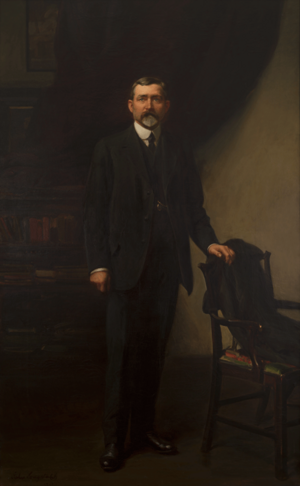
After leaving parliament, Watson had a successful business career. In 1920, he helped start the National Roads Association (NRA). This group worked to improve roads in New South Wales. In 1923, the NRA became the National Roads and Motorists' Association (NRMA), and Watson was its first president. He held this role for the rest of his life. The NRMA grew quickly, offering services like vehicle insurance and help for motor touring. Watson also directed a taxi company and chaired a government traffic committee. In 1936, he became the first chairman of the petrol company Ampol.
Personal Life
Watson's first wife, Ada, passed away in 1921. In 1925, he married Antonia Mary Gladys Dowlan. She was a waitress from Western Australia. In 1927, they had one daughter, Jacqueline.
Watson died at his home in Double Bay, New South Wales, on 18 November 1941, at the age of 74. He was given a state funeral at St Andrew's Cathedral. His ashes were buried at the Northern Suburbs Crematorium.
Legacy and Recognition
Many people thought highly of Chris Watson. Percival Serle said that Watson "left a much greater impression on his time than this would suggest." Alfred Deakin wrote that the Labor Party owed a lot to Watson's "tact and judgement."
In April 2004, the Labor Party celebrated 100 years since Watson's government. They held events in Canberra and Melbourne. Watson's daughter, Jacqueline Dunn, was a special guest. The Canberra suburb of Watson and the federal voting area of Watson are named after him. In 1969, he was honored with a postage stamp featuring his picture.
See also
 In Spanish: Chris Watson para niños
In Spanish: Chris Watson para niños
- Watson Government
- Watson Ministry
- German Chileans


